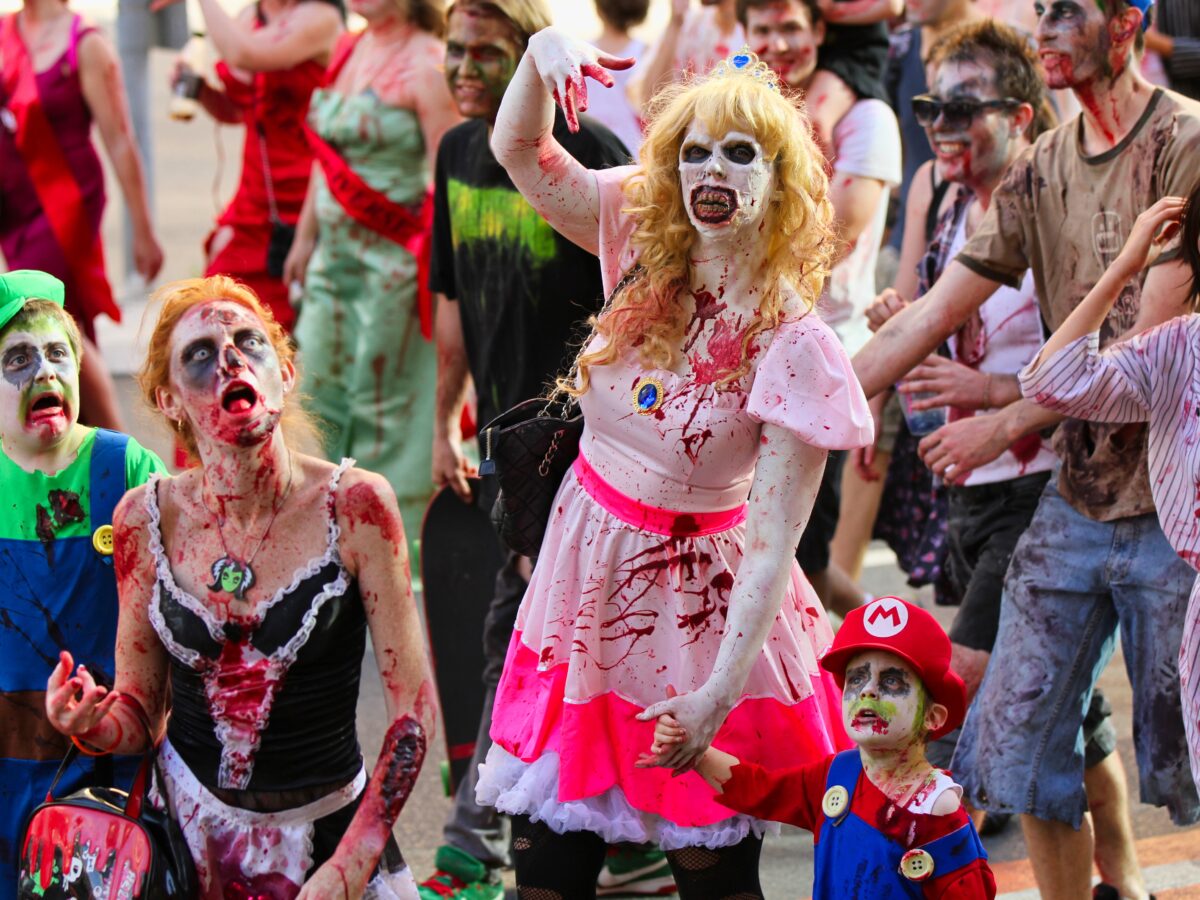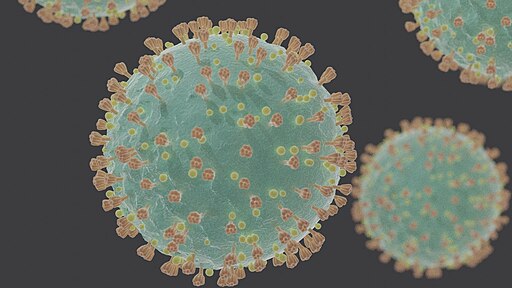This true story is based on a film


I love a good – or even middling – horror about an epidemic. I’ve sat through Outbreak, 28 Days Later, Train to Busan and Cordon, to mention just a few, along with the more humorous ones such as Zombieland or Shaun of the Dead, stuffing crisps and chocolate in my mouth while enjoying a pleasurable shudder. Afterwards, I have often had nightmares about facing such a situation in reality, most of which have ended badly for me – a tacit admission by my subconscious that when it comes to snap decisions, sprinting through wastelands, trusting the right people instantly and coolly shooting the rest on sight, I quite simply don’t have what it takes. Now, I am officially living through a pandemic. Work and school have both moved to home, the online supermarket is sold out of toilet paper and rice (and, bizarrely – pancake mix!?), and the summer holiday we had just booked is starting to look unlikely to ever happen. Yet, I am finding it very hard to properly comprehend that the current corona epidemic is real. Drawing on my film experience, this is a bad thing, as it’s usually those who are slow to grasp the gravity of the situation who die screaming in a pool of red foam, while the paranoiacs head for the hills with the (usually very attractive) last survivor of the opposite sex.
The current situation is like nothing I have ever experienced. What is more, it is like nothing anyone I know has ever experienced. We’ve seen it in news reports – distanced, measured, and mostly in countries that look very different to ‘home’. So, our closest approximation to personal experience comes from TV and films. Right now, I often feel like I am living in a film. That surreal feeling is compounded by the fact that it is a very unorthodox film, that fails to conform to any of the rules of the genre. I can’t fall back on the ‘lessons’ learned in all my film watching, because the traditional clichés are conspicuous by their absence.
Take the question of who is infected, for instance. This is easy in a film. One of the characters looks pale, with dark circles under their eyes. They get a nose bleed, or start coughing in a weird way – and you know they’ve got it. A close-up of droplets from a sneeze floating around a cinema, and we know everyone in the cinema is now infected. Reality is far more confusing. Since the corona epidemic started, everyone in my household has been ill. Was it the flu that was going around the schools at that time? A simple cold? Or was it the corona virus? None of us had a cough, or a temperature – but then, not everyone with corona virus gets those. Did we have it, have we passed it on to others? There are no answers to those questions.

Felipe Esquivel Reed / CC BY-SA (https://creativecommons.org/licenses/by-sa/4.0)
The pace of the ‘film’ is also all wrong. It started off in the traditional way – normal everyday life being slowly pervaded with signs of the coming storm. Then – bam, the virus was in our own country, our own town. People were confined to their houses, there was panic-buying and people stockpiling goods. But then – someone hit pause. Weeks later, we are still at home. While there are shortages online, our local shop is so well-stocked that they have a sale on toilet paper. Numbers of casualties are mounting, but, fortunately, no one I know personally has definitely had the virus yet, let alone been hospitalized. My avid daily reading of the news has tapered off as it has become stale. Aside of the changing numbers, there seems to be no real news. Things aren’t getting better, but they’re not getting much worse, either, and no one seems to know how it is going to pan out. By this time in a film, we’d be braining each other with baseball bats, here, the worst you get is a sour look if someone judges you to have come closer than 1.5m. Yes, the postman puts down our parcels next to the door and then jogs away – but he does it with a wave and a smile.
In a film, the epidemic would dominate life. With a little room left over for some dramatic character developments; re-connecting with estranged parents/partners, losing family or friends, finding true love. Whereas the reality of daily life at the moment is that nothing much is happening. Instead, the days are filled with the mundane. Work, school, food shopping, cooking. Settling children’s squabbles, fixing the laptop, paying bills. The weather is also stubbornly refusing to behave as it should – no dramatic thunderstorms, just a spell of very pleasant spring weather, occasionally interspersed with the more familiar grey spring drizzle.
It’s not only for epidemics that my view has been skewed by TV, film and books. My impression of the Second World War was also based on clichés. Life at that time meant rationing, bombs, soldiers being killed, families being destroyed, all against a backdrop of endless grey skies. Later, I realized to my shock that there were also warm summer days, babies being born, students studying for exams, shopkeepers running businesses, people having petty arguments. Ordinary life.
Do I wish for drama instead? Of course not. I am eternally grateful that my current experience of this crisis bears not even a remote resemblance to a horror film. But the disjoint between the seriousness of the situation and the banality of my daily experience makes it really hard to know how to behave. If everyone around me was dropping like flies, then primal survival would take over. All that would count would be food, water and secure shelter for my family. Instead, it is a complex balancing act of many different factors, all uncertain. How do I weigh up the possible damage to my children’s education if I try to combine work with home schooling, against the possible damage to my job prospects if I don’t? Or the risk of catching corona by taking my children outside for exercise, against the risk of ill health or psychological issues if we stay indoors all the time?

Experts offer conflicting opinions, different countries are taking radically different approaches, everyone is confused. This was particularly so in the early days, when it was unclear if we faced a devastating virus similar to the 1918 flu, or if it would turn out relatively mild after all, like the swine flu. Even now, when it is clear that the virus is dangerous, it is unclear exactly how dangerous, and who is actually at risk. To me, it is obvious that we need to follow official instructions. This isn’t a time for us all to choose our own individual course – the potential consequences to others are too severe for that. However, the official guidelines leave plenty of room for interpretation, and are so complex that it is hard to know when you are doing the ‘right’ thing. When is a journey essential? We’re not supposed to go outside in groups of more than 3. Unless you’re a family. From the same household. Or is it OK even then, as long as you keep a distance of 1.5m? Not to mention the fact that there are plenty of people who are being more careful than the official instructions, who stopped going to restaurants before they were closed down, who now stay home even when they are allowed out to exercise. Are they neurotic fools or smart survivors? And what about those who deliberately flout rules to try and assure their own safety, such as people who stockpile food? Are they antisocial egotists, or practical forward planners? Despite all these uncertainties, people are quick to point a moralizing finger at others, as discussed in this excellent Dutch article about ‘intelligent morals’.
There was another time in my life that I felt very similar confusion and doubt. Just as now, the experts disagreed on the best course of action. Just as now, different people swore by very different approaches. Just as now, society was standing ready to judge my choices. And, just as now, my decisions had potentially far-reaching consequences, that I couldn’t possibly predict. It wasn’t an epidemic, though – it was when my first child was born.
So, bereft of any script to follow, all I can do now is the same as I did in those hectic newborn days. Keep weighing up the official advice and the example of others against my own specific case, decide as best I can, and take it one day at a time. The future is too big and uncertain to deal with.
At the end of the day, under all the blood and gore, most epidemic films emphasize the need for love and the support of other people in order to survive, and that’s as good advice as any. Finally, Hollywood does offer one simple, practical tip to get through the monotonous grey no-mans-land we are currently mired in: Rule 32 from Zombieland:
Comments (1)
Thank you for this funny, uplifting and enlightening post!